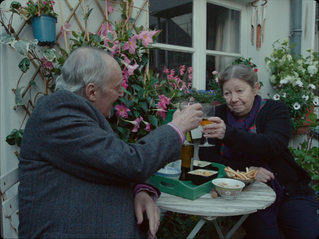Art and the Everyday
- Isobel Wise
- Oct 8, 2018
- 2 min read
Updated: Aug 16, 2020
If money were not object, my nursery would have been fitted with William Morris wallpaper. Strawberry Thief may have been chosen, or perhaps Seaweed or Honeysuckle. I’m sure their scrolling foliage and patterns of blossoming flowers, fruits and wildlife would have fascinated any young child. However, despite these designs not adorning my childhood walls, I came to know them very well. Compton embellished my dad’s favourite mug whilst Fruit existed as a tea towel in the kitchen. Larkspur, Wreath, Trellis and Pimpernel today still furnish our home in the form of aprons, trays, pillow covers and tote-bags. I even used a free sample of Golden Lily to cover my GCSE art sketchbook. For me, there is something so nostalgic about Morris and Co. designs. I grew up with their reproductions in my home and until recently thought nothing of it.

Trellis wallpaper, designed by William Morris and Phillip Webb, 1862, England. © Victoria and Albert Museum, London
Morris once wisely said,
‘Have nothing in your house that you do not know to be useful or believe to be beautiful’.
Although our home is filled with many things one would struggle to claim as beautiful or useful, the mismatched junk of the family house has its own strange kind of beauty. The bowl filled with a jumble of pebbles, keys, coins, dog biscuits, hair clips and old receipts. The box of wires and cables never used and their functions long forgotten. I feel that I am starting to romanticise the mundane here, and one probably shouldn’t start to analyse the clutter of everyday life. Yet, I feel there is more to be gained from looking at interiors this way. I grew up with Morris and Co., not on my wall, but in the everyday objects I interacted with. So much has been written about Morris, the Arts and Crafts movement and interior design as a whole, but little considered into how this translates into the homes of ordinary people today.

Wreath wallpaper, designed by William Morris, 1876, England. © Victoria and Albert Museum, London
So I suppose this acts as a brief prologue to a series of writings surrounding the topic of the everyday interior. To come will be further analysis into the work of William Morris and the Arts and Crafts movement, the interiors of the Bloomsbury group and the work of Frank Lloyd Wright across the pond. I’ll also be considering the importance of reproductions and the accessibility of design. Perhaps by considering these renown designers alongside our ordinary furnishings, a reevaluation can take place, as Morris said,
‘The true secret of happiness lies in taking a genuine interest in all the details of daily life.’.








Comments